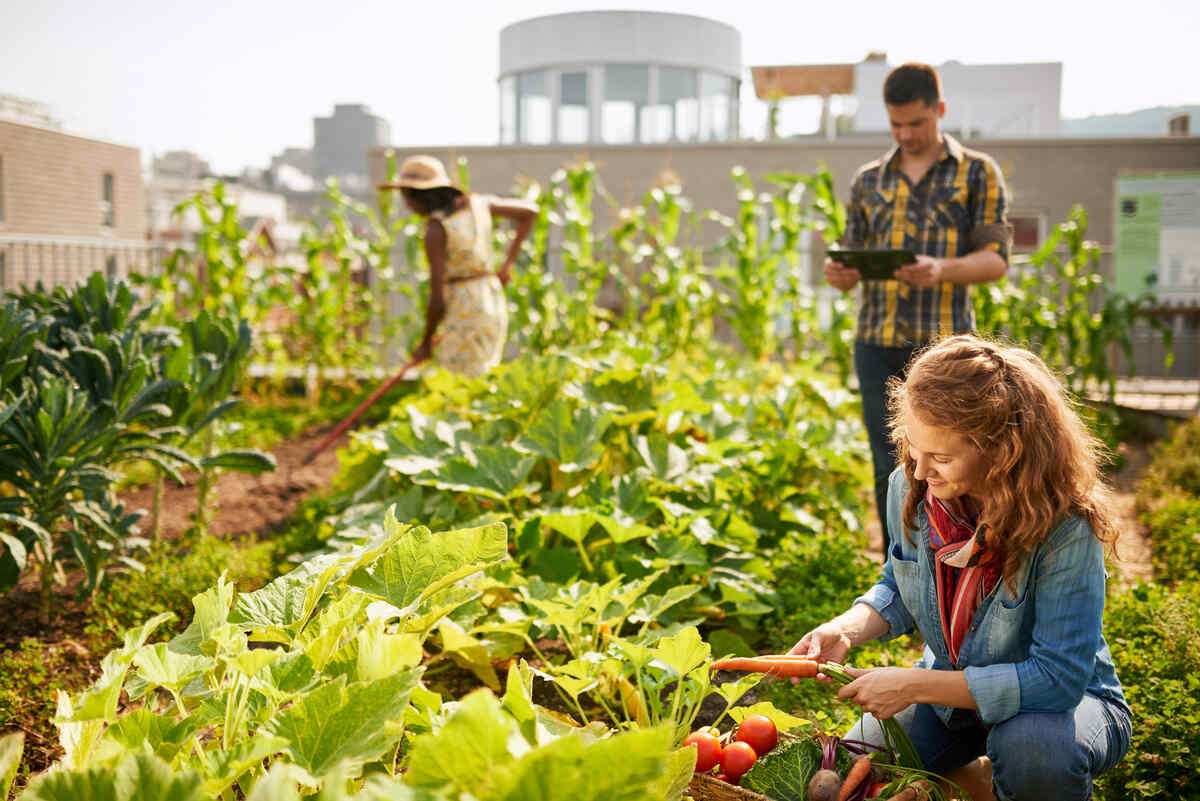The Best Guide To City Blooming
The Best Guide To City Blooming
Blog Article
City Blooming - Truths
Table of ContentsThe Best Strategy To Use For City BloomingIndicators on City Blooming You Need To KnowThings about City Blooming10 Simple Techniques For City BloomingThe 30-Second Trick For City Blooming
Fascinated in expanding food available in the City of Chicago? Thinking of starting a community yard? Changes to the Chicago Zoning Statute enable farming usages like neighborhood yards and city ranches in lots of parts of the city. Below is a list of regularly asked inquiries relating to the regulations and guidelines that cultivators should consider when preparing a city agriculture project.
The zoning modification does not change any various other codes handling composting, structure licenses, buying or leasing City owned residential or commercial property, organization licenses or ecological contamination. There are existing codes that control these concerns and they continue to be in complete result and may apply to your project. Neighborhood yards are typically possessed or taken care of by public entities, public organizations or community-based companies and kept by volunteers.
Urban ranches grow food that is intended to be offered, either on a not-for-profit or for-profit basis. Due to their business objective, urban farms require an organization certificate.
The 25-Second Trick For City Blooming
The amount of compost product can not surpass 25 cubic yards at any kind of offered time according to the standards in 7-28-715 of the City's Municipal Code. Due to the fact that the dirt at the majority of new yard sites requires changing, compost, soil, timber chips, or other products can be obtained to construct or improve the expanding space.

If a building license is needed then the hoophouse will be thought about an accessory structure. You can discover more concerning the structure permit needs by speaking to the Division of Structures. The 25,000-square-foot size limit is meant to stop a single community yard from controling an offered block or diminishing the block's existing domestic or industrial personality.
The limit does not apply to yards found in Public Open Area (POS) districts. Can there be more than one area garden that is 25,000 square feet on a single block? Secure fencing is not called for, nevertheless, gardens that have big car park areas may be required to install fence or various other landscaping features.
Little Known Facts About City Blooming.
B1 & B2 areas require that all commercial use activities be conducted inside your home. Is secure fencing needed for metropolitan farms? Fencings may be called for, along with landscape design and screening, for particular auto parking areas and exterior job or storage space areas depending on location and the particular activity taking area.
Urban farms require structure licenses and zoning authorizations prior to construction (landscaping). Various other forms of city review may be required depending on details structures, tasks, size, landscaping, licensing, public health and stormwater management concerns.
The Division of Organization Matters and visit here Consumer Protection can help determine the particular kind of service permit that's called for. Off road car park is needed for a lot of industrial jobs in Chicago. The called for number of car parking spaces is based on the number of workers functioning on site and not the square video of the expanding space.
See This Report about City Blooming

An urban ranch can sell garden compost material produced on website, nonetheless, the procedure must conform with the guidelines in 7-28-715 of the Chicago Municipal Code. Aquaponic systems are permitted indoors on urban ranches in several zoning areas.
Approximately five hives or colonies of honey may be maintained as an accessory use. Nonetheless, beekeepers must sign up with the Illinois Division of Agriculture. For additional information about the suggested zoning amendment you may call the Division of Housing and Economic Advancement, Bureau of Planning and Zoning at 312.744.8563.
Farming in cities and metropolitan areas An urban ranch in Chicago. Urban agriculture describes various techniques of growing. https://city-blooming-46604195.hubspotpagebuilder.com/blog/city-gardening-cultivating-green-spaces-in-urban-areas, processing, and distributing food in city areas. The term likewise uses to the area activities of pet husbandry, tank farming, beekeeping, and horticulture in a city context. Urban agriculture is distinguished from peri-urban farming, which takes place in country areas beside suburbs.
4 Easy Facts About City Blooming Described
, who seek to create social networks founded on a shared principles of nature and area holism. These networks can establish by means of formal institutional assistance, coming to be incorporated right into neighborhood community planning as a "transition community" activity for sustainable city development.
In either situation, the more straight access to fresh veggie, fruit, and meat products that may be know with metropolitan agriculture can enhance food protection and food safety while decreasing food miles, resulting in reduced greenhouse gas discharges, thereby adding to climate modification reduction. A few of the first proof of metropolitan farming comes from Mesopotamia.
Report this page